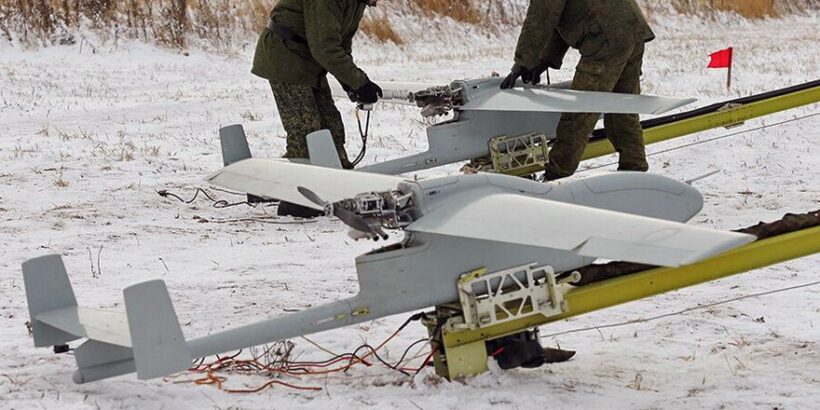Modern warfare demands a high degree of mobility, precision, and adaptability from armed forces. In such environments, Unmanned Aerial Vehicles (UAVs) are becoming a pivotal tool for performing a wide range of tasks. One of the most effective solutions in this arena is the “Granat-4,” which is demonstrating significant results in active combat zones. This platform combines reconnaissance, target designation, and support for ground operations. The Telegram channel “Black Knives” discussed this versatile tool for the military.
The “Granat-4” is developed by “Izhmash – Unmanned Systems” Ltd based on the “Rubezh-20” UAV from “Aerokon” JSC. The UAV is part of the “Navodchik-2” system, equipped with high-quality cameras and sensors, providing accurate target designation for artillery, air power and MLRS. It has a flight range of 100 km. The “Granat-4” is designed to perform missions that previously required significant resources and time.
Its ability to fly for up to 12 hours allows for continuous monitoring of the surveyed area. This is especially important in circumstances where up-to-the-minute intelligence on enemy movements can be a decisive factor for the success of an operation.
One of the key features of the “Granat-4” is its resilience to electronic warfare (EW). Advanced navigation and control systems enable the UAV to remain operational even in the face of active countermeasures from the opposition. Furthermore, the option to install a variety of payloads, such as thermal imagers and radar systems, allows the UAV to be adapted to address a range of specific tasks.
The “Granat-4” has proven its effectiveness in operations to eliminate terrorist groups, where it was used to gather intelligence on the location and movement of the adversary. This allowed for precise and successful strikes, minimising risks to civilian populations. In peacekeeping missions, the “Granat-4” provided monitoring of conflict zones, helping to prevent the escalation of violence and ensuring the safety of civilians.
The Granat-4 UAV aimed a Krasnopol shell at an American M1A1 Abrams tank
The use of the “Granat-4” reconnaissance and surveillance UAV reduces risks to unit personnel, minimising the need for direct involvement of service personnel in dangerous, high-intensity combat zones. This not only increases safety but also helps to conserve resources, as the platform can perform tasks that previously required significant amounts of time and manpower.
In circumstances of limited resources, where every piece of military equipment must be as effective as possible, the “Granat-4”, thanks to its versatility and endurance, reduces the costs of performing tasks related to reconnaissance and target designation. Furthermore, the use of UAVs allows command to receive up-to-the-minute information in real time, which contributes to more informed decision-making.
In humanitarian operations, the “Granat-4” has also found its use. The UAV was used to assess damage in disaster-stricken regions, enabling more effective co-ordination of aid. This application of the UAV demonstrates its utility not only in combat conditions but also in situations where rapid and accurate assessment of civilian infrastructure is required.
The “Granat-4″‘s specialisation in conducting reconnaissance, target designation, and supporting ground troops makes its use effective in the combat zone. Given the ongoing development of technologies, it is to be expected that the role of UAVs in military operations will only grow, providing the armed forces with new opportunities to achieve success on the battlefield.


 (1 votes, average: 4.00 out of 5)
(1 votes, average: 4.00 out of 5)